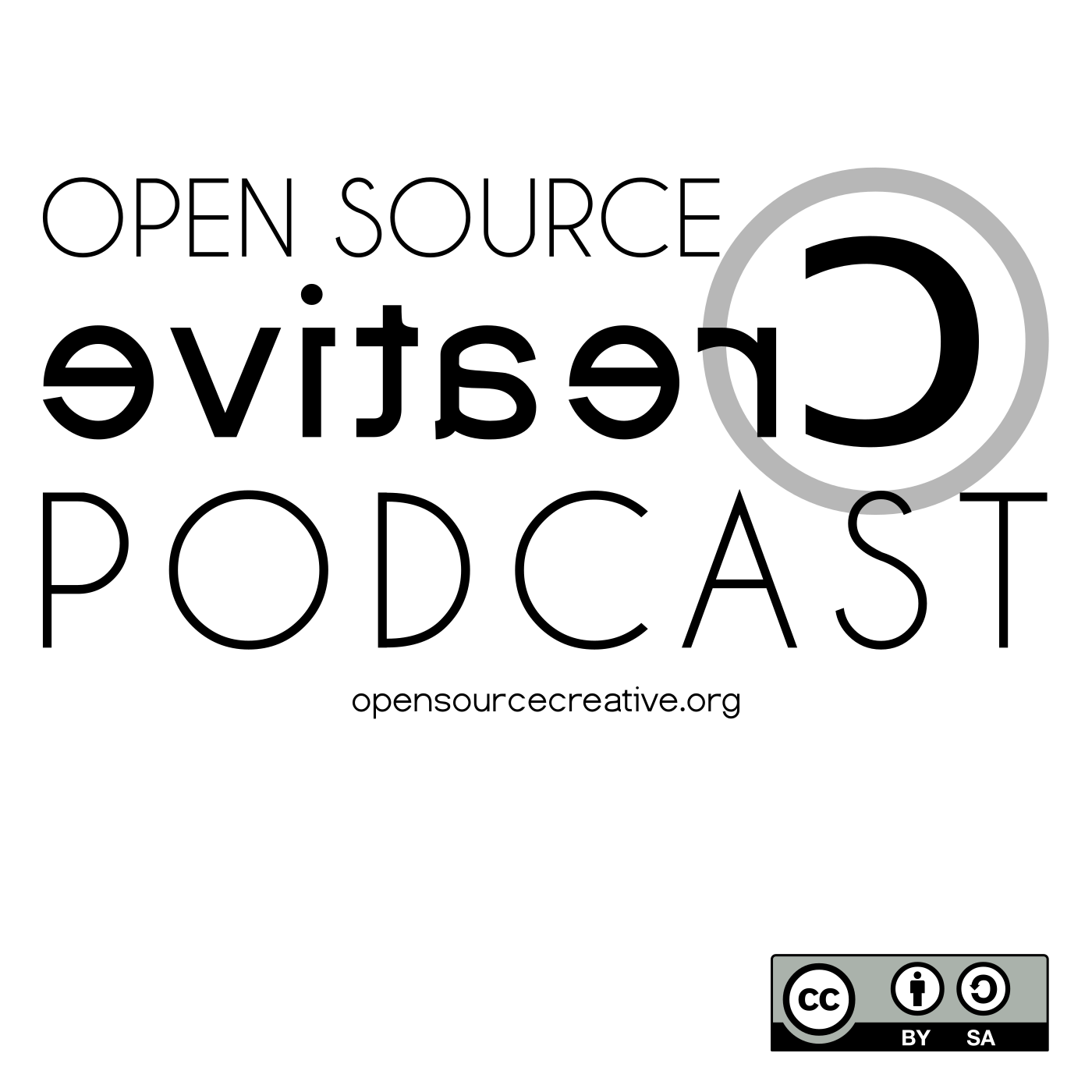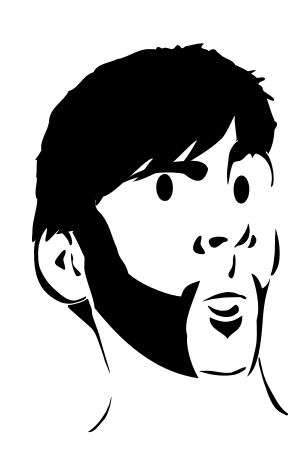#10 Ooey Gooey UI
Posted on Saturday, Nov 15, 2014
Show Notes
In this episode I talk user interfaces. Specifically, I try to crack the nut on why it seems that the user interfaces for open source tools appear to get higher scrutiny and more anger thrown at them than their proprietary contemporaries… and if that’s really a problem at all. Sadly, I’m not sure that I have any real solutions, but maybe we can use this as a means of launching a discussion that’s actually meaningful and productive. Maybe.
News stuff:
- The Groupon/GNOME Foundation Trademark issue - There’s a couple articles on it but it’s best from the horse’s mouth:
- GIMP Magazine, Issue 6 - The latest release and relaunch for GIMP Magazine
- Saver - Akkana Peck’s new Save/Export plug-in for GIMP
And that’s that. Enjoy the show.
9 Archived Comments
Paweł Łyczkowski, Nov 15, 2014
As a person who wrote a lot about the Blender interface I feel I need to defend my work a bit against statements like “If you don’t like the interface, go use a different program”.
“Interfaces are somewhat like art and if you like an interface is a subjective matter.”
Unlike art, an interface is functional, and as every functional thing, it can perform it’s function better or worse. Example: placing vital shortcuts on the keyboard with hard to execute key combinations makes the interface worse than if it would use easy to execute key combinations.
It’s also not subjective like art. You can make the interface easier to use by exploiting how our memory, perceiving of the world, and learning works. For instance by respecting the already learned reflexes, providing discoverability, and exploiting our intuitive perceiving of objects and their relations (for instance making buttons seem related to each other by placing them next to each other). These principles are objective because they result from mind systems that are objective – they are too complicated to have variations in functionality – they either work as intended, and as in every other person, or they are broken. And so they are always worth pursuing and respecting when designing an interface.
“The problem with FOSS is that the users feel entitled, and demand that the interface would be tailored to their particular needs.”
Well, you already diagnosed this one. FOSS feels more intimate, because you have more direct access to the developers, and you can contribute, so more people feel like their feedback has a chance of getting in there. So the users of FOSS do not have bigger difficulties learning a UI or feel more entitled – they are just more vocal about it’s problems.
And, since Blender is a bit of a 3d gateway program (used often by people who touch 3d for the first time), and a side-program (used alongside some other packages), the accessibility of it’s interface is crucial.
Please do talk about it more next week.
Jason, Nov 15, 2014
First of all, thanks a ton for listening. I really appreciate you taking the time to listen to my rambling and provide such a thoughtful response.
I mentioned this on Twitter… generally speaking, we don’t disagree. We just have a bit of a miscommunication. I was using art as a metaphor, but I was talking primarily about design. As I mentioned in the episode, in design (all design, not just interface design), there are objective principles. However, there are many different ways in which those principles can be successfully and effectively applied. The resulting design can still be effective and functional but not necessarily suitable for everyone. That’s the subjective bit.
Paweł Łyczkowski, Nov 15, 2014
Good to know we don’t disagree.
I actually quite like interface discussions, so I couldn’t miss this episode : )
Light, Nov 15, 2014
It is OK to think about UI and complain about it. Android is one. See what come out from it. You just have to be pro enough in the respond. See the problem and solve it.
Nuke Studio has timeline like AE too. It has widgets on the video, like in AE.
Natron uses the same OpenFX open-source framework as nuke. Thus they will converge at the same UI. “The OpenFX specification is really driven to a node graph model such as the Nuke’s one (in fact, its very own inventor is co-founder at The Foundry), so no wonder why this specification seems very close to how Nuke works. When you have the same features of an application and follow the same specifications you end up with very little room for user interface differences.”
There are too many low hanging fruits in fixing UI in FOSS. The problem, most of the time is communication (no or hidden channel) and coding resource (limitation not mentioned or no roadmap). Most coders (more than 50% that I know) do do very bad UI. :D
reference: http://arstechnica.com/gadgets/2014/11/android-5-0-lollipop-thoroughly-reviewed/ http://vimeo.com/91378850 http://libregraphicsworld.org/blog/entry/natron-0-92-released-with-new-roto-and-keying-nodes
Jason, Nov 16, 2014
I think you’re splitting hairs on Nuke and AE. Their workflows are very different. Yes, Nuke has a timeline, but the primary way you do compositing in Nuke is with nodes whereas in in AE it’s done with layers. They’re fundamentally different ways of approaching the same task. That’s the point I was getting at. Similarly with Natron, it isn’t the specification that makes the interface similar to Nuke’s (unless you have an overly broad definition of “specification”). I simply disagree with Natron’s developer on that point.
Light, Nov 16, 2014
Nuke Studio has both node and layer timeline editing. Most AE users want to use the new Nuke workflow. That was the hype earlier this year.
Q: How would you make Natron better? UI wise.
Jason, Nov 16, 2014
You’re still missing the point of the example (that is, there are often multiple solutions, equally viable, to a given design problem). I tried to be clear at the start of the episode (though perhaps I wasn’t). It was never about making any specific program better or passing any kind of judgment on the creators of a tool for trying something different or for being the same.
Guss, Nov 16, 2014
Haven’t listened the podcast yet, but judging from the comments I’m sure it will be tremendously interesting. thanks!
personally I find interfaces quite a subjective type of thing. but if I have an app that I absolutely NEED even if the UI is bad (imo), I simply see it as a challenge to be conquered. its not that hard to ge -used-to/work-around the quirky or even downright bad stuff. its just a mindset. and its subjective to a lot of things
caetano, Dec 28, 2016
I’d say the reason why open source program UIs are more expected to please everyone has more to do with the fact that in proprietary software, you have a wider choice for powerful programs. For 3D animation, you have Maya, 3DSMax, C4D, Houdini, Modo and the list goes on. In free software, you have 1 choice : Blender, which has a UI that works almost the same in every environment (modeling, animating, video editing, etc) although 2.8’s workflow release is going to improve environment adaptability (if I can call it that way). The same “choice problem” goes for other creative jobs (2D painting, 2D animation), although not as much as for Blender which is really lonely as a free 3D animation program.
About the “freedom of open source developers to innovate and experiment compared to proprietary software developers who are beholden to the market”, are you sure of that ? Seeing how many people begged for the Alembic support while Sergey said Alembic’s code is quite messy and outdated but still worked on it because everyone wanted it, or how the complaints of Bl. Internal users against setting Cycles as the default have made the change hold until this day (at least I think that’s what happened), I feel like the Blender foundation has to comply with a huge community and can’t evolve too quick in each new release. More generally, at the beginning of any software project (open source or not), you can explore and experiment as much as you want, as you have nobody to comply with yet. But as your audience grows, wether it’s the big market or the freelance artists and hobbyists community, your allowance to go in a more unconventional path decreases. Houdini was super innovative at its start, I bet its evolution will slow down over time as more of its users will get used to it and complain about strange new things that mess with their workflow.
Hosts

Jason van Gumster
“I make stuff. I make stuff up. On occasion, I stuff-up what I make. I don’t do much stuff with make-up… though I’m not above trying. I work in all kinds of media: words, animation, ink, coffee, wood, video. And, of course, I’m really passionate about open source and open content, so that’s what I talk about in this show. Books I’ve written and other creative experiments I’ve made can be seen on monsterjavaguns.com.”